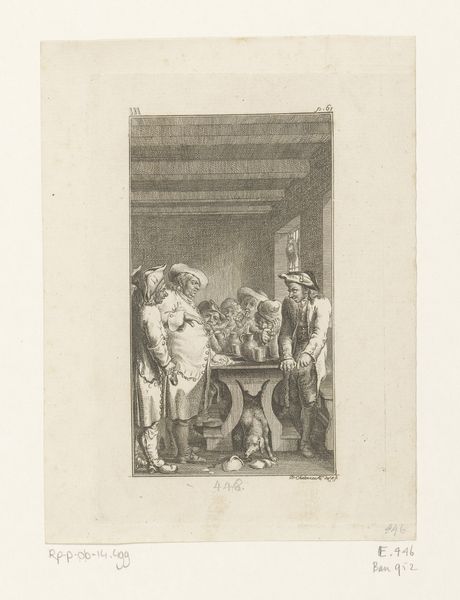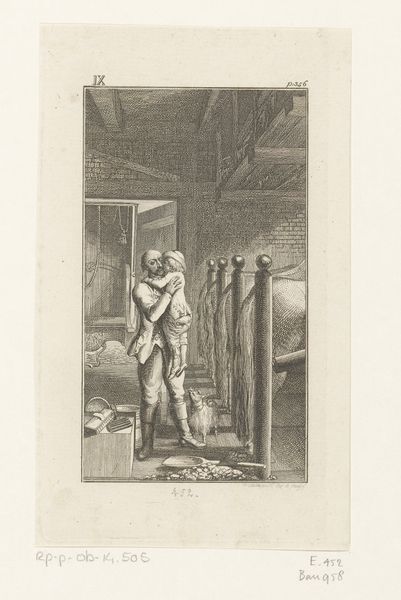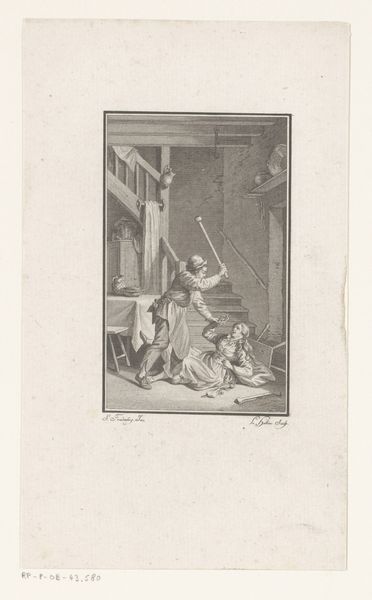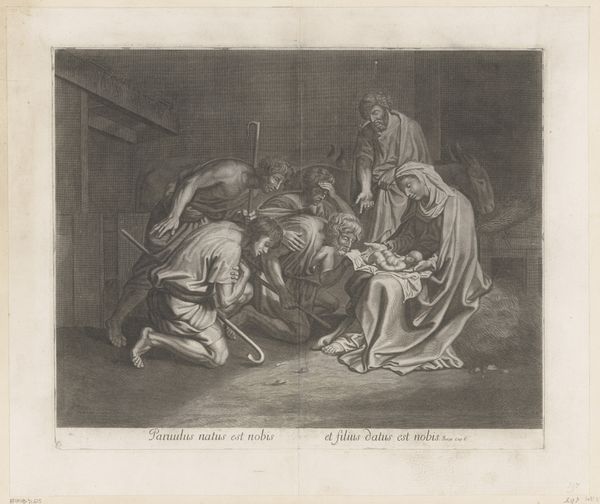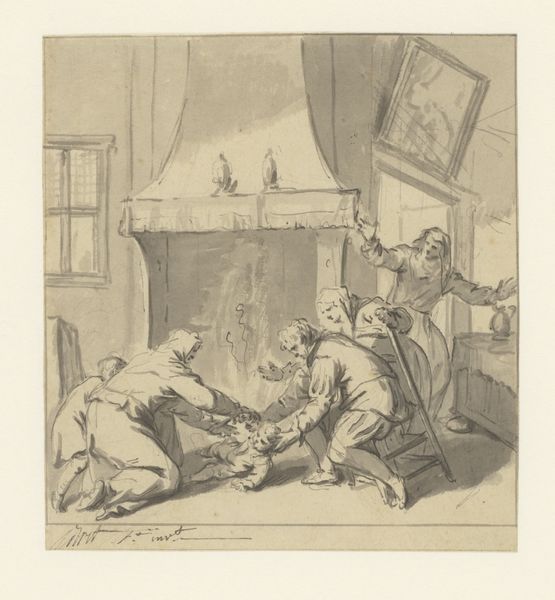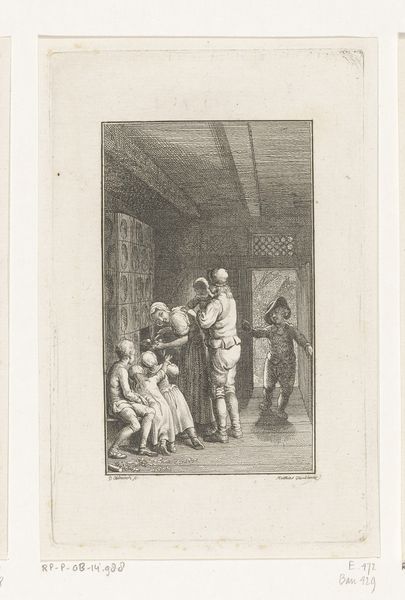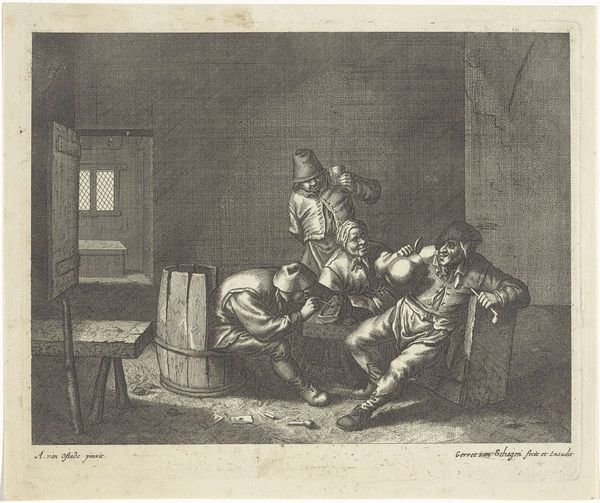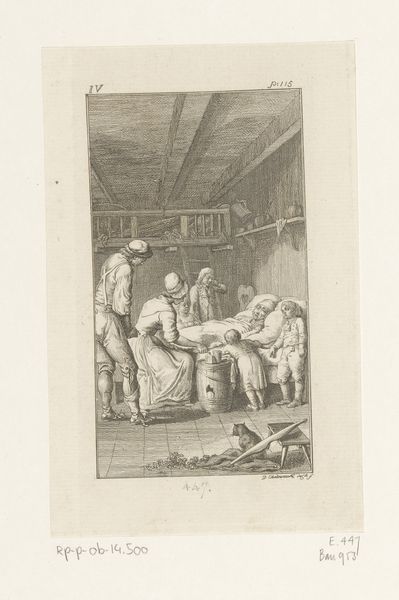
Mélinte en Eurylas vinden de gevallen Corinne, Curion en Palamède 1639
0:00
0:00
print, etching, engraving
#
narrative-art
#
baroque
# print
#
etching
#
old engraving style
#
figuration
#
chiaroscuro
#
history-painting
#
engraving
Dimensions: height 192 mm, width 149 mm
Copyright: Rijks Museum: Open Domain
Curator: Let's take a look at "Mélinte en Eurylas vinden de gevallen Corinne, Curion en Palamède," an etching by Abraham Bosse from 1639, part of the Rijksmuseum collection. What's your initial read on it? Editor: My first impression is intense sorrow and dramatic lighting. The scene seems heavy, almost claustrophobic. It makes you feel the weight of the subject's distress. Curator: Absolutely. Bosse, working within a Baroque sensibility, was adept at utilizing chiaroscuro to heighten emotional impact. The etching narrates a specific moment—Mélinte and Eurylas discovering the fallen figures of Corinne, Curion, and Palamède, names likely alluding to a historical text we can look into further. Editor: The choice of the story, no doubt, contributes to the aura of suffering. You see these limp bodies being discovered; the people reaching out, seemingly frozen. The emotional context seems ripe with questions of morality and power, I would guess? Curator: Indeed. The historical moment heavily shaped the piece's reception. 17th-century audiences were very interested in depictions of the tragic events involving power structures, and how everyday life gets pulled into moments of such tension and trauma. I find the representation of vulnerability and its exposure especially fascinating. Editor: That is right! In light of contemporary theory, I think of the politics of visibility. The figures’ bodies, now subject to view and to judgment. The question then becomes: what kind of narratives do we build around them? Are these just fallen heroes, or are there intersectional analyses we can layer? Curator: Very insightful. Bosse’s work, placed in historical context, demonstrates a potent public engagement. It encouraged viewers to think critically about the images they consumed and how those images influenced broader societal perceptions. Editor: I agree; this image provides a snapshot into the complexities of humanity’s moral compass, reminding us that art is never created, received, or examined within a vacuum. Curator: Indeed, and in many ways, this etching is more relevant than ever for contemporary audiences.
Comments
No comments
Be the first to comment and join the conversation on the ultimate creative platform.

